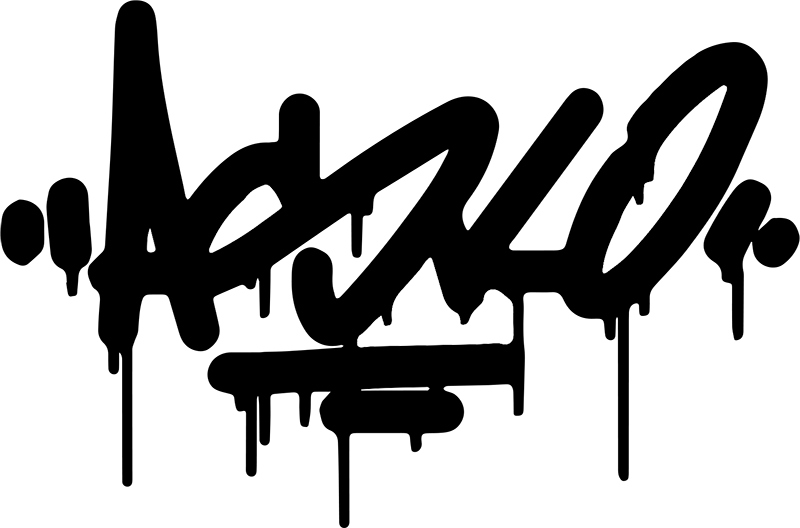1. Tag
Tagging is the easiest and simplest style of graffiti; it includes one colour and the artist’s name or identifier. Taggers are using graffiti for fame and notoriety. Their objective is to get their crew (group) name and or their individual moniker up on buildings, signs, walls, etc. … The more locations that they tag their graffiti on or the more difficult the location to remove their tags, the more fame and recognition they receive. Hence, tagging is considered as a very simple form of graffiti. It is considered disrespectful to write a tag over another artist’s tag or work.
2. Throw-up or a bomb
Sometimes called a “throwie” is a simple form of graffiti, sitting between a tag and a bomb. It’s usually painted with a simple letter outline and then filled with color. Easy-to-paint bubble shapes often form the letters.
3. Letters
Letters can be different styles. The oldest style – Wild Style
Wildstyle is an elaborate version of a throw-up and is particularly hard to read. Wildstyle often consists of arrows, curves, spikes and other things that non graffiti artists might not understand.
4. Blockbuster
Blockbusters are used to cover a large area in a small amount of time. Blockbusters can be painted with rollers, which makes them faster and easier to do.
5. Stencil
Stencil is a form of graffiti that makes use of stencils made out of paper, cardboard, or other media to create an image or text that is easily reproducible. The desired design is cut out of the selected medium and then the image is transferred to a surface through the use of spray paint or roll-on paint. Banksy and Shepard Fairey are the most known for their use of the stencil.

